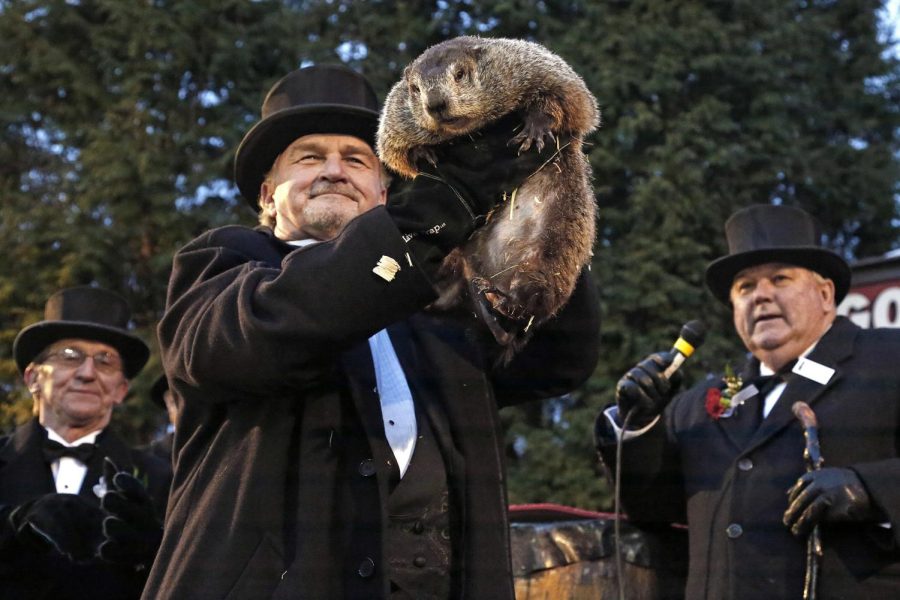No Shade, but What’s the Deal with Groundhog Day?
Punxsutawney Phil is pictured in all his glory at Gobbler’s Knob.
February 9, 2022
Each year as the cold, dark days of winter stretch on, people anxiously await the one day that will mark either the end of this winter season or the beginning of six more weeks of the bitter cold – Groundhog Day. This “holiday,” which has been a tradition since 1887, has tricked us into relying on the wit and knowledge of a rodent meteorologist to tell us how much longer we must wait out the winter season. But why does such a big, climactic decision rest in the paws of a medium sized mammal?
Groundhog Day dates back to the Christian tradition of Candlemas, where candles represented the length and coldness of winter. Germans modified this ritual by selecting a hedgehog instead of a candle to be their weather prognosticator. When German settlers came to America and settled in Pennsylvania, they continued this tradition using a groundhog instead of a hedgehog, given the prominence of groundhogs in Pennsylvania.
In 1887, hunters from Punxsutawney decided that only one groundhog, Phil, should be utilized as the weather forecaster. I guess when you’re the first to coin such a strange holiday, you also get to decide that your groundhog is the only one capable of making important weather decisions. Since then, other groundhogs have risen to fame, including Birmingham Bill, Staten Island Chuck and Shubenacadie Sam, but none will ever be as beloved and admired as Pennsylvania’s own Punxsutawney Phil.
But seriously, with all the scientific weather technology that has emerged since the long gone year of 1887, should we still be relying on a rodent to tell us how long winter will last? At this point, this holiday seems to be nothing more than a source of profit and publicity for the town of Punxsutawney, regardless of what the groundhog actually predicts. In fact, the Pennsylvania Great Outdoors Visitors Bureau predicts that “the event brings in over $1 million to the local economy every year.”
Each year, between 20,000 and 50,000 people visit Punxsutawney, causing a boom in lodging, food and gas for the local community. So, this small Pennsylvania town has kept this tradition alive because it single handedly supports the stability of its local economy. Moreover, with the heavy publicity that surrounds this holiday now, it is near-impossible for the groundhog to not see its shadow.
Surrounded by cameras and lights filming its annual prediction, the groundhog is bound to see his shadow more times than not. Indeed, looking back at groundhog days over the last 125 years, Punxsutawney Phil has seen his shadow a resounding 107 times, while not seeing his shadow only 20 times.
Almost every year, there has been an additional six weeks of winter, all because some source of light shined on a groundhog, basically forcing him to see his shadow. This year Groundhog Day was celebrated on Wednesday Feb. 2, and to no such surprise, Punxsutawney Phil saw his shadow. We all must live through another six weeks of winter.
While the idea of upholding tradition is arguably nice, the fact that this holiday has stuck around for so long is a little absurd. Furthermore, the fact that a small town in western Pennsylvania gets to profit off of an essentially made up day by some German settlers is even crazier. Of course, the tradition is already too long lasting to probably ever see an end, so we should all expect to see an extra six weeks of winter for a long time to come.


